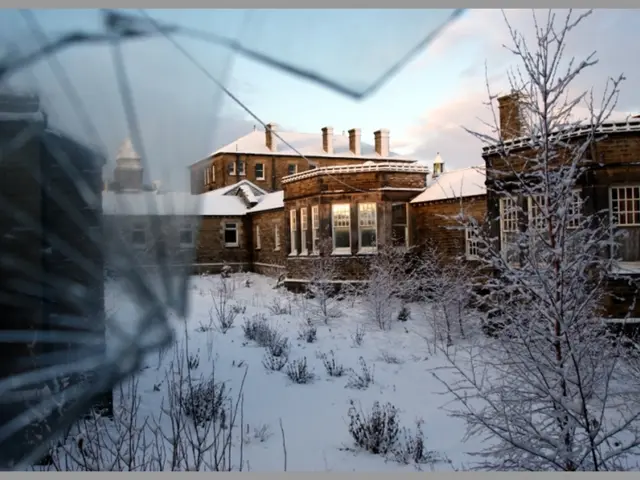"Executive Overreach? Trump Fights for Immigration Policy Changes"
Half a million immigrants granted legal residence seek court approval - Trump appeals to US Supreme Court
Get ready for a legal battle royale as the Trump administration takes on the Supreme Court in a bid to revoke residency rights for half a million South American immigrants.
The Trump administration isn't backing down on its aggressive immigration policy, taking aim at hundreds of thousands of immigrants residing legally in the US hailing from Cuba, Haiti, Nicaragua, and Venezuela. The Supreme Court has become the focal point of their battle as Solicitor General John Sauer pleads for the reversal of a court order barring the government from snatching away the humanitarian protection of these 532,000 migrants.
In their push to dismantle protections for these migrants, the administration has accused a federal judge of encroaching on the executive's prerogatives in managing the immigration system. The judge, according to the administration, has overstepped their bounds and undermined one of the most significant decisions regarding immigration policy.
Judge Indira Talwani had previously blocked the government from stripping residency status for those under the CHNV (Cuba, Haiti, Nicaragua, Venezuela) program due to a flawed interpretation of immigration law. Talwani argued that this move only targets non-citizens who entered illegally, not those with legal authorization, such as those under the CHNV program.
Trump's administration announced in March the end of the legal status for these migrants. They were given until April 24 to depart the US unless they could prove another legal status. The program, launched by former President Biden in October 2022, initially granted up to 30,000 migrants per month the chance to enter the US based on human rights conditions in their home countries, with an initial two-year stay.
Trump's hardline stance on immigration has won him favor among many conservative voters. With his sights set on the 2024 presidential election, he has promised the largest deportation campaign in US history — a controversial approach that repeatedly faces legal challenges.
This immigration policy shift is just one piece of a broader strategy by the Trump administration to redefine US immigration policies and limit judicial oversight. The outcome of this Supreme Court appeal could have far-reaching implications, determining whether executive power overrides judicial decisions in shaping immigration policy.
- Donald Trump
- Migrants
- USA
[1] The administration's appeal to the Supreme Court was triggered by an appeals court denial of the administration's request to stay the lower-court order.[2] If successful, the administration's immigration policy changes aim to expedite deportations and limit judicial oversight in decision-making processes.
[1] The European Union and its Member States watch closely as the Supreme Court in the USA deliberates over the deportation of half a million migrants from Cuba, Haiti, Nicaragua, and Venezuela, reflecting a conservative policy shift that Donald Trump is pushing for.
[2] It is evident that politics play a significant role in this issue, with the general news covering the legal battle between the Trump administration and the judiciary over policy-and-legislation related to immigration.
[3] Solicitor General John Sauer, representing the Trump administration, argues that the judgment previously made by Judge Indira Talwani encroaches on the executive's prerogatives in managing the immigration system, claiming an overreach of jurisdiction.
[4] WhatsApp groups buzz with discussions on this war-and-conflicts-induced migration and its impact on the US, as many of these migrants seek refuge from unstable countries.
[5]This legal tussle over sauer, migration, and policy-and-legislation becomes a landmark case in determining the balance of power between executive power and judicial decisions, with implications extending far beyond the 532,000 affected migrants.








